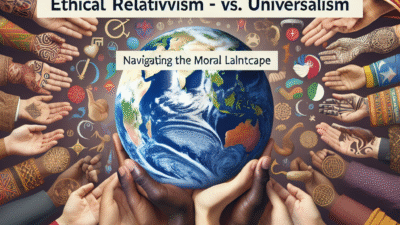Introduction
In a world where personal autonomy and ethical dilemmas often collide, the topics of euthanasia and abortion stand at the forefront of moral discourse. These issues not only challenge our understanding of life and choice but also evoke deep emotional responses and philosophical inquiries. As society grapples with these complex subjects, it becomes essential to navigate the moral landscape with sensitivity and insight.
This article aims to explore the intricate relationship between life and choice, focusing on euthanasia and abortion. We will delve into the ethical considerations, societal implications, and personal narratives that shape these discussions. By the end of this comprehensive guide, readers will gain a deeper understanding of these critical issues and be better equipped to engage in informed conversations.
Understanding Euthanasia: A Closer Look
What is Euthanasia?
Euthanasia, often referred to as "mercy killing," involves intentionally ending a person’s life to relieve them from suffering, typically in cases of terminal illness. This practice raises profound ethical questions about the value of life, the right to die, and the responsibilities of healthcare providers.
Types of Euthanasia
- Voluntary Euthanasia: Conducted with the consent of the patient.
- Involuntary Euthanasia: Performed without the patient’s consent, often considered unethical.
- Active Euthanasia: Involves taking specific steps to cause death, such as administering a lethal injection.
- Passive Euthanasia: Involves withholding or withdrawing treatment that sustains life.
Ethical Considerations
The ethical landscape surrounding euthanasia is complex. Proponents argue that individuals should have the right to choose how and when they die, especially in cases of unbearable suffering. Opponents, however, raise concerns about the potential for abuse, the sanctity of life, and the moral obligations of healthcare providers.
The Role of Legislation
Laws governing euthanasia vary significantly across countries and regions. In some places, such as the Netherlands and Belgium, euthanasia is legal under strict conditions. In contrast, many countries maintain prohibitive laws, reflecting diverse cultural and religious beliefs.
Abortion: A Multifaceted Issue
What is Abortion?
Abortion is the termination of a pregnancy before the fetus can live independently outside the womb. Like euthanasia, abortion is a deeply polarizing issue that intersects with moral, ethical, and legal considerations.
Types of Abortion
- Medical Abortion: Involves taking medication to end a pregnancy.
- Surgical Abortion: Involves a medical procedure to remove the fetus from the uterus.
Ethical Considerations
The debate surrounding abortion often centers on the question of when life begins. Some believe that life starts at conception, while others argue that a fetus does not attain personhood until later stages of development. This fundamental disagreement shapes the moral landscape of abortion.
The Role of Legislation
Abortion laws vary widely around the globe. In some countries, abortion is accessible and legal, while in others, it is heavily restricted or outright banned. The legal status of abortion often reflects societal attitudes toward women’s rights, healthcare, and moral beliefs.
The Intersection of Euthanasia and Abortion
Common Ethical Themes
Both euthanasia and abortion raise similar ethical questions about autonomy, the value of life, and the role of medical professionals. The discussions surrounding these topics often involve:
- Autonomy: The right of individuals to make decisions about their own bodies.
- Quality of Life: The consideration of suffering and the quality of life in making end-of-life decisions.
- Moral Responsibility: The obligations of healthcare providers in respecting patient choices while adhering to ethical standards.
Societal Implications
The societal implications of euthanasia and abortion are profound. These issues challenge us to confront our beliefs about life, suffering, and the role of government in personal choices. As societies evolve, so too do the conversations surrounding these topics, often leading to significant legal and cultural shifts.
Personal Narratives: The Human Experience
Stories of Euthanasia
Personal stories often illuminate the complexities of euthanasia. For instance, consider the case of a terminally ill patient who chooses euthanasia to avoid unbearable suffering. This decision, while deeply personal, raises questions about the role of family, healthcare providers, and societal norms.
Stories of Abortion
Similarly, personal narratives surrounding abortion can be equally compelling. A woman facing an unplanned pregnancy may choose abortion for various reasons, including health concerns, financial instability, or personal circumstances. Her story reflects the multifaceted nature of choice and the societal pressures that can influence such decisions.
Navigating the Moral Landscape: Key Takeaways
Understanding Perspectives
To navigate the moral landscape of euthanasia and abortion, it is crucial to understand the diverse perspectives that exist. Engaging in open, respectful dialogue can foster greater understanding and empathy.
The Importance of Informed Choice
Both euthanasia and abortion underscore the importance of informed choice. Individuals must have access to accurate information and support to make decisions that align with their values and circumstances.
Advocacy and Support
Advocacy plays a vital role in shaping the discourse around euthanasia and abortion. Supporting organizations that promote education, access to healthcare, and patient rights can help create a more informed society.
Conclusion
The topics of euthanasia and abortion are complex and deeply personal, intertwining ethical, moral, and societal considerations. As we navigate this moral landscape, it is essential to approach these discussions with empathy, understanding, and respect for individual choices.
By fostering open dialogue and advocating for informed decision-making, we can empower individuals to navigate their own paths in life and choice. Remember, the journey through these moral landscapes is not just about laws and ethics; it’s about real lives and the choices that define them.
FAQs
1. What is the difference between euthanasia and assisted suicide?
Euthanasia involves a healthcare provider actively ending a patient’s life, while assisted suicide refers to providing a patient with the means to end their own life.
2. Is abortion legal everywhere?
No, abortion laws vary significantly by country and region. Some places allow it under specific circumstances, while others have strict prohibitions.
3. What are the main arguments for and against euthanasia?
Proponents argue for personal autonomy and relief from suffering, while opponents raise concerns about the sanctity of life and potential for abuse.
4. How can I support individuals facing decisions about euthanasia or abortion?
You can provide emotional support, share accurate information, and advocate for access to healthcare and counseling services.
5. What resources are available for those seeking information on euthanasia and abortion?
Organizations such as Planned Parenthood and local hospice care services offer resources and support for individuals navigating these issues.
By engaging with the moral complexities of euthanasia and abortion, we can foster a more compassionate and informed society. Let us continue to explore these vital topics with an open heart and mind.




